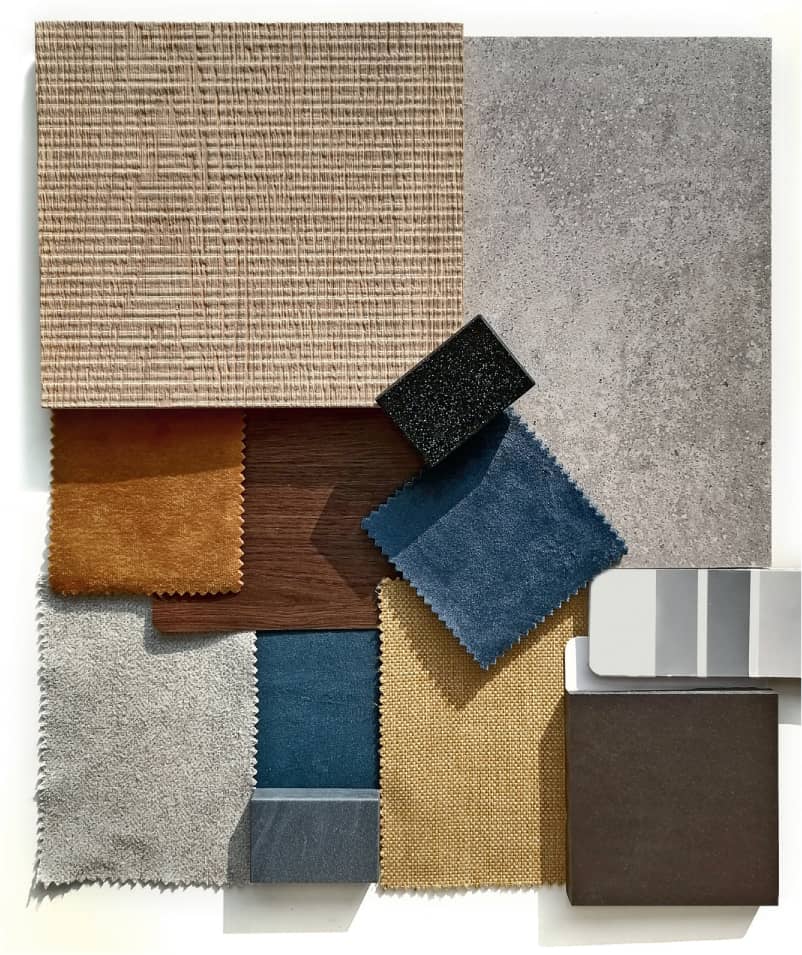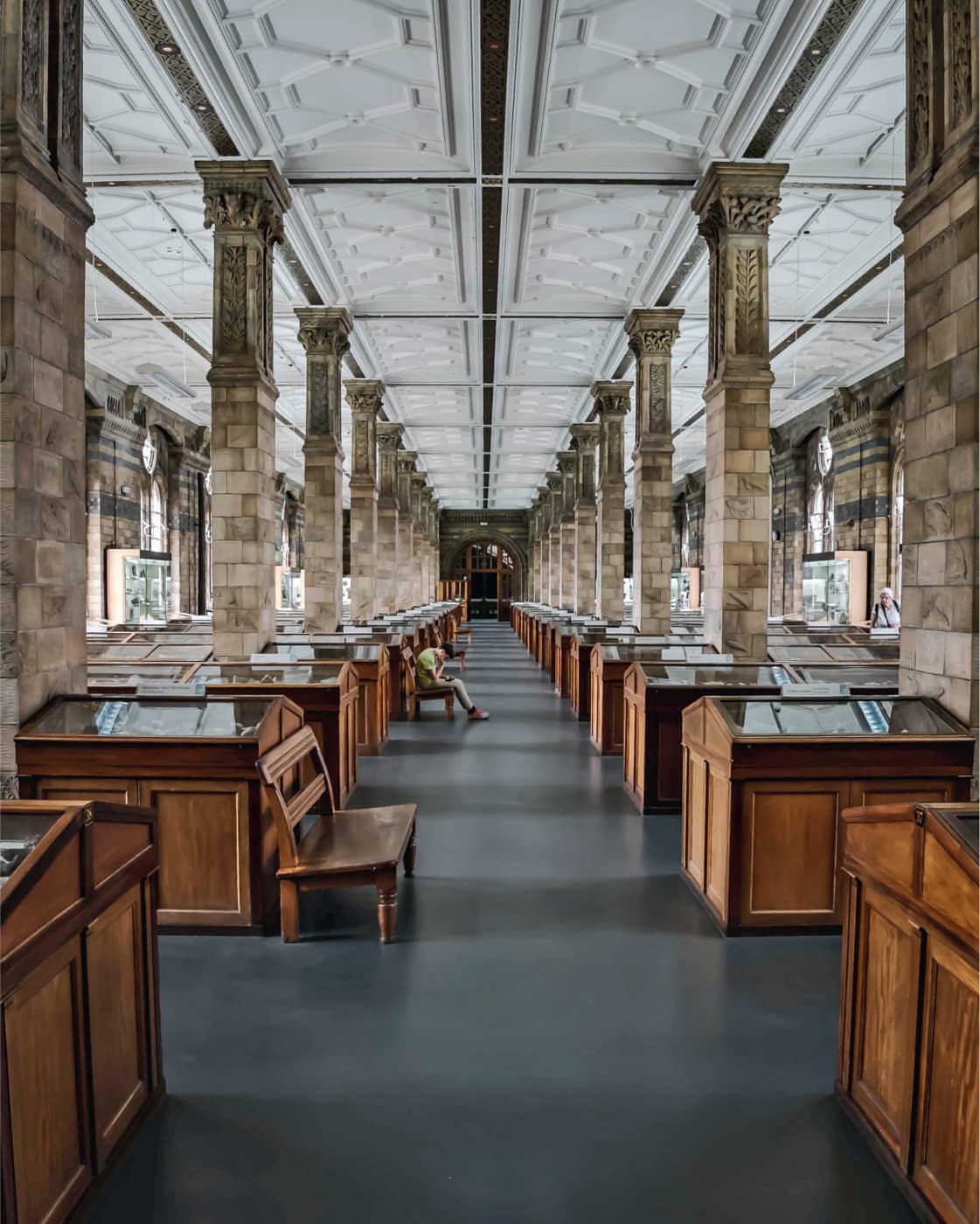59 Mood
The use of materials, furnishings, and color to evoke emotion.
A mood is the establishment of a set of ideas that are based on color, furniture style, lighting, and textures. A mood is typically developed early in the design process, and represents the direction for the palette of materials and furnishings that will be used during the development of an interior’s design.
Mood boards, or the art of collecting inspiration, materials, and themes together, have evolved over the relatively short history of interior design. In the late twentieth century, interior designers presented physical sample boards to clients, with actual materials hot-glued to a board for presentation. Ideally, materials should be proportionally represented on the board to give the client a clear understanding of the ambience, fixtures, furniture, and finishes that comprise the elements of a design proposal. With the arrival of the Internet, the ability to gather and share images and ideas with clients and collaborators has shifted to mostly digital boards and sites that cater to the collection and arrangement of ideas.
If the space of a project is existing, a designer can look to the proportion of the space, the size of openings and windows, orientation, and context as a beginning point to create a mood. For example, a house by the ocean suggests an open, airy, and light-filled space, with cool tones and lighter hues that reflect and bounce the color of the sea into the rooms.

Once materials are gathered, the interior designer can use informal arrangements to begin to explore combinations of texture and color.

In the Minerals Gallery at London’s Museum of Natural History, heavy casework and rusticated columns establish a subdued atmosphere that suggests study and quiet conversation.
There are several digital tools and apps that can be used to create mood boards. Slide sharing and online collaboration tools make communicating ideas easy and efficient. In addition, websites such as MaterialBank provide designers with access to a multitude of samples from a number of sources.
Presentation Tools
For developing narrative-based mood boards
Google Slides www.google.com/slides/about/
PowerPoint www.microsoft.com
Keynote www.apple.com/keynote
Collaboration Tools
For developing collaborative and interactive mood boards
Miro www.miro.com
Pinterest www.pinterest.com
Material Samples
MaterialBank www.materialbank.com

